Are you a distributor or importer?
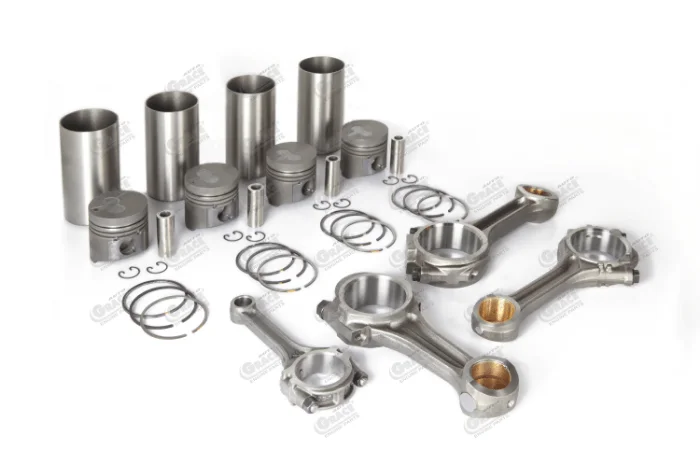
Just like the motor is the heart of the vehicle, the power cylinder forms the heart of the motor. This is the location where the power that drives the vehicle is generated. Potential chemical energy of combustible fuels like diesel, petrol, natural gas, LPG etc. is converted into mechanical energy by burning the fuel under high pressure. Thus, components of the power cylinder – cylinder liner, piston, piston rings and the connecting rod – are subject to incredibly high temperatures and pressures. Reliability, strength and wear resistance are of critical importance for these components. Garima Global provides reliable pistons, piston rings and connecting rods by partnering with leading vendors of India, in addition to the world-class cylinder liners produced at our own plant.
In repair market, customers prefer buying the complete power cylinder kits, or liner-piston kit sets to replace these high-wear components. AutoGRACE® kit sets are assembled by Garima Global using in-house cylinder liners with pistons and pistons rings procured from leading manufacturers in India. Special care is taken to segregate the cylinder liners as per their bore size and pair them with pistons of matching diameter so that an optimum fit is achieved to ensure maximum sealing while ensuring a smooth, minimum-friction movement. The piston rings are mounted on the pistons by carefully offsetting the ring gaps around the piston circumference to prevent blow-by through ring gaps.
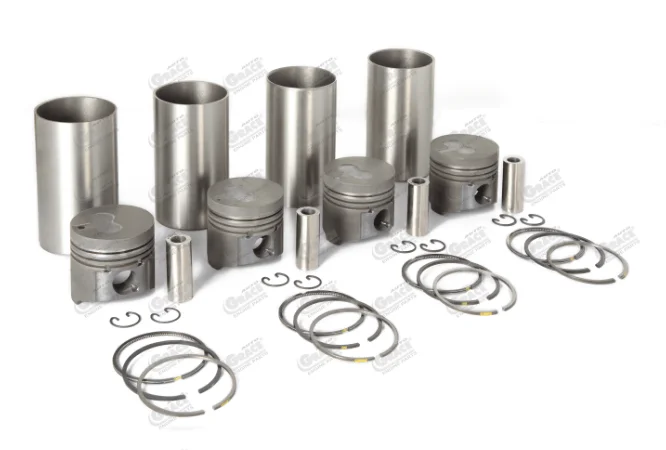
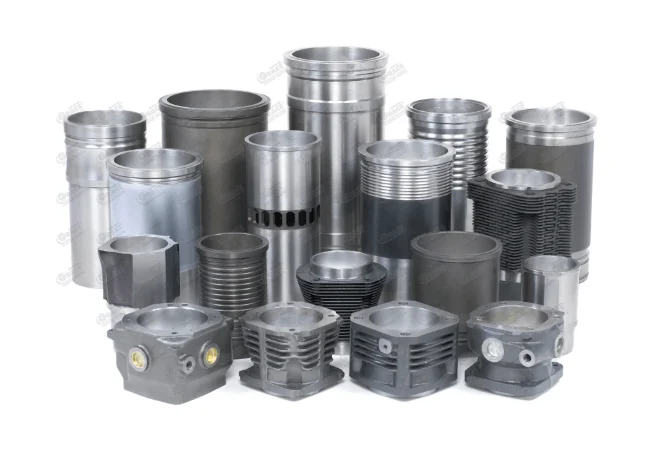
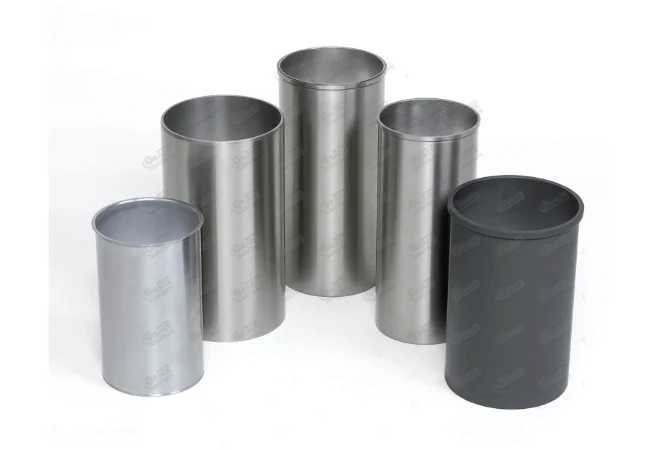
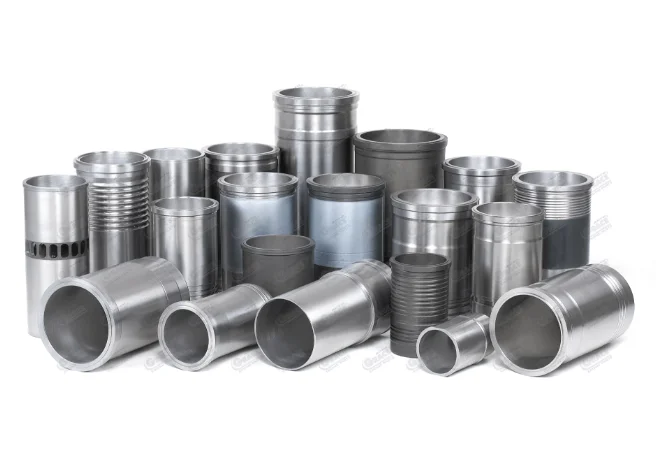
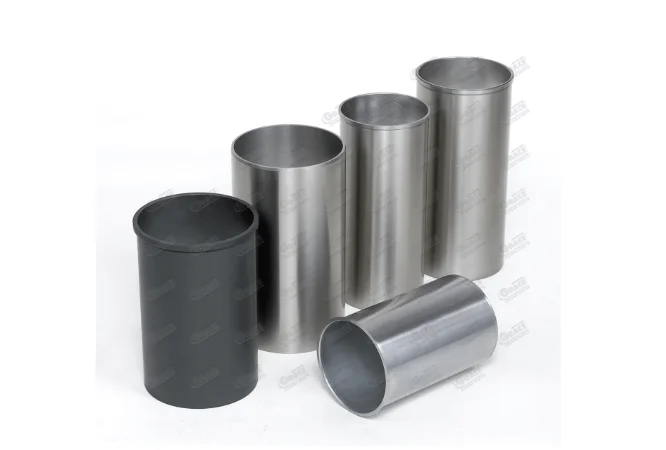
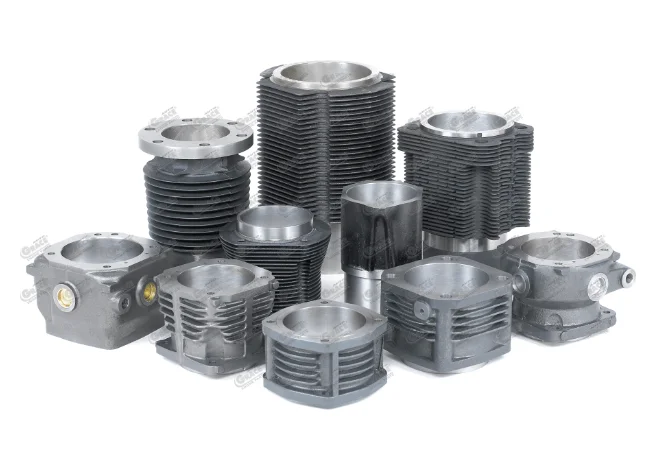
Along with the piston rings, the cylinder liners serve the slip-and-seal function in the power cylinder. Classified broadly into monolithic, inserted and bonded designs, the insert technology liners are by far the dominant design due to their ease of repair and lower costs. Within the insert technology cylinders, the main types are WET LINERS, DRY SLEEVES and AIR-COOLED LINERS. Recently some engines like Isuzu have used CROMARD® type STEEL-CHROME LINERS, where base material is a steel alloy and the bore is coated with Chromium.
Piston acts like a moving wall that is pushed toward the crankshaft by the force generated from the combustion of the air-fuel mixture, and back up toward the head due to the inertia of the rotating crank. It is thus at the frontline of the combustion event. It has to act as a reliable seal against combustion gases escaping into the crankcase area, and lubricating oil spray leaking into the combustion chamber. The varied demands placed on the piston result in engineering and material specifications that conflict with each other and have to be evaluated and optimized for each application carefully. Consequently a wide variety of piston designs have been developed – pistons with oil cooling galleries, metal strip inserts, ring carriers, articulated pistons and Monotherm® pistons.
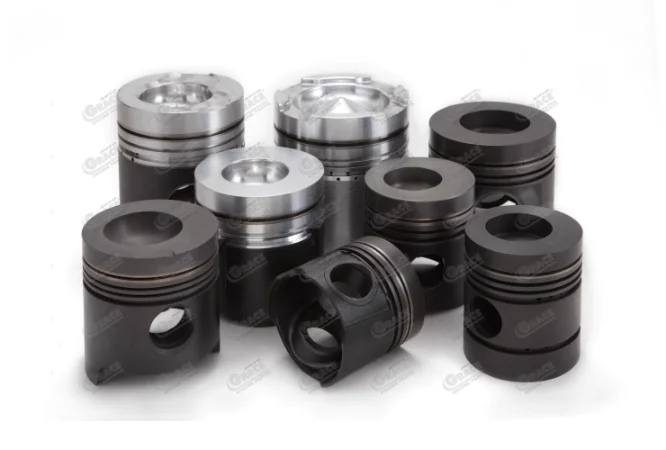
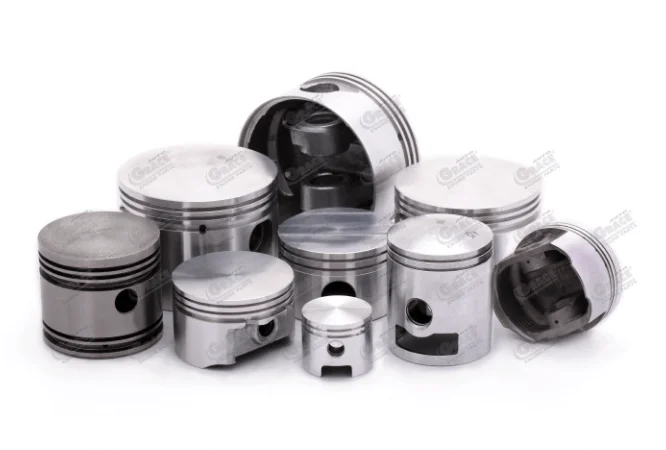
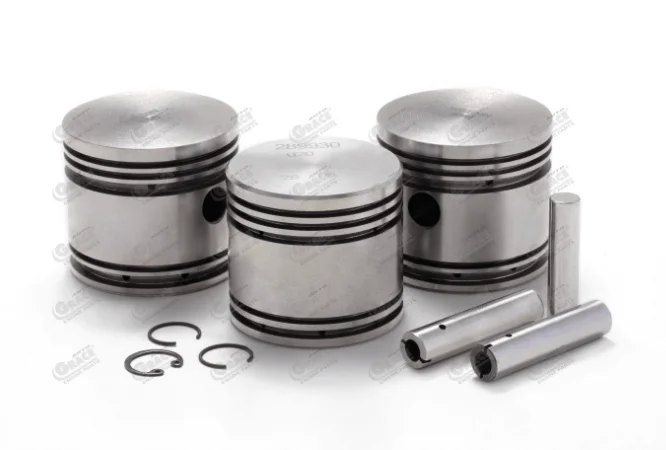
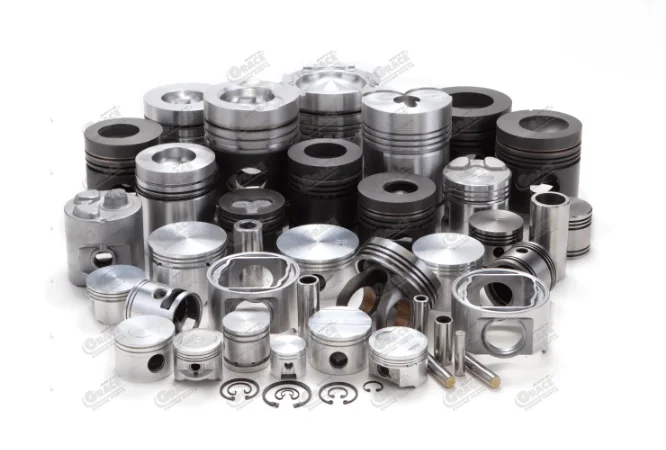
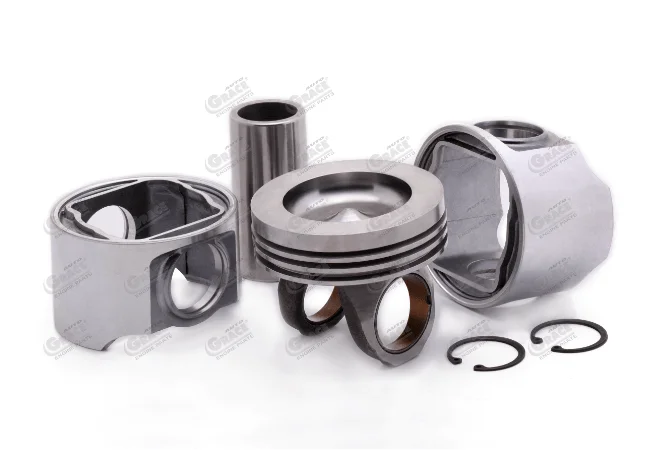
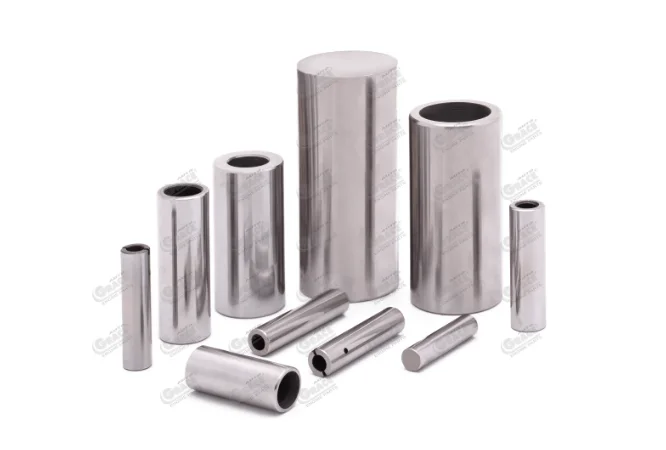
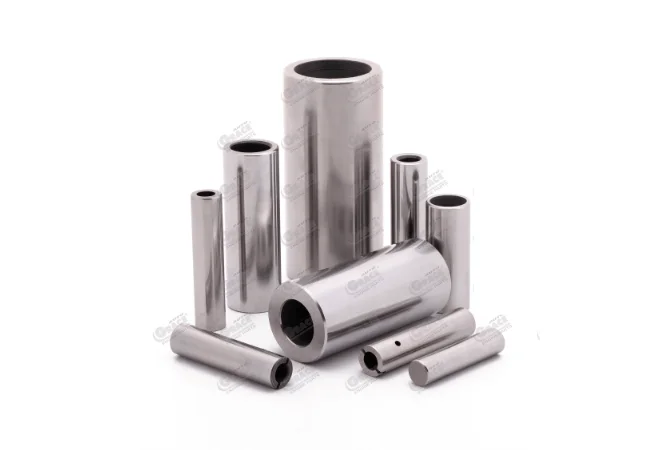
Also called wrist pins or gudgeon pins, piston pins operate under highly unfavourable lubricating conditions due to limited movement relative to the piston boss and connecting rod small end bush, while subject to extreme reciprocating loads of combustion and inertial forces. Thus they are manufactured using case hardened steel alloys like 16MnCr5 and their outer surface is super finished to minimize friction even under low lubrication conditions.
Piston rings are metallic gaskets that are installed into the ring grooves of the pistons. To minimize frictional losses, the trend is toward smaller number of rings per cylinder, with the standard being 3 – top 2 are compression rings, followed by 1 oil control ring. The compression rings seal the combustion gases into the combustion chamber thus maximizing power output, while the oil control ring maintains a thin layer of oil along the liner wall to minimize sliding friction between rings and liners. The middle ring is often a shoulder / bevel ring that strips off excess oil from the liner wall.
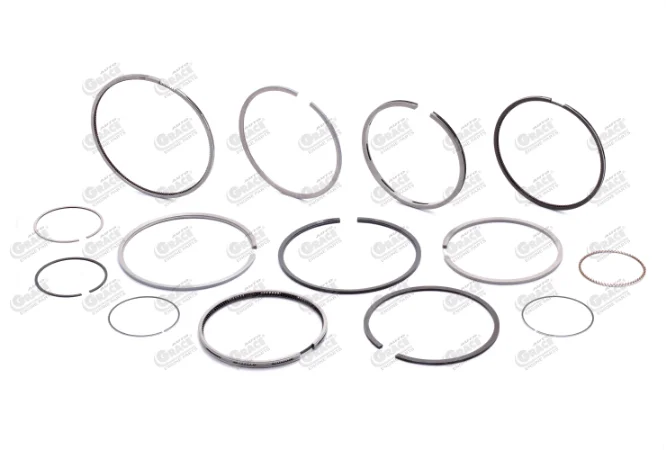
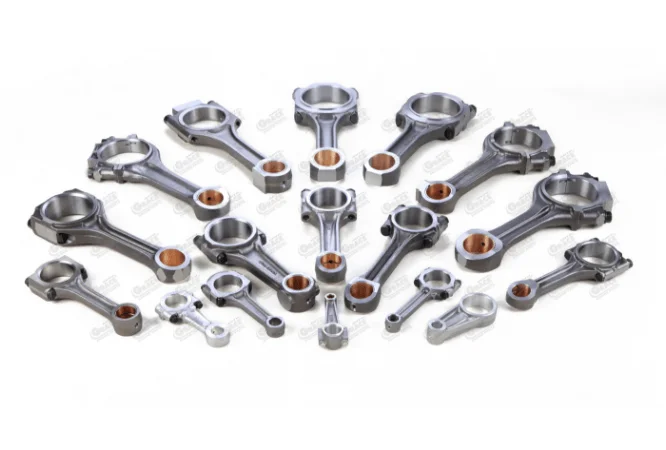
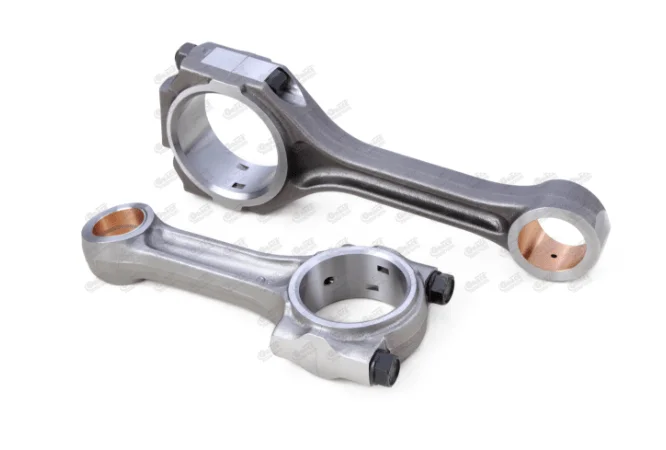
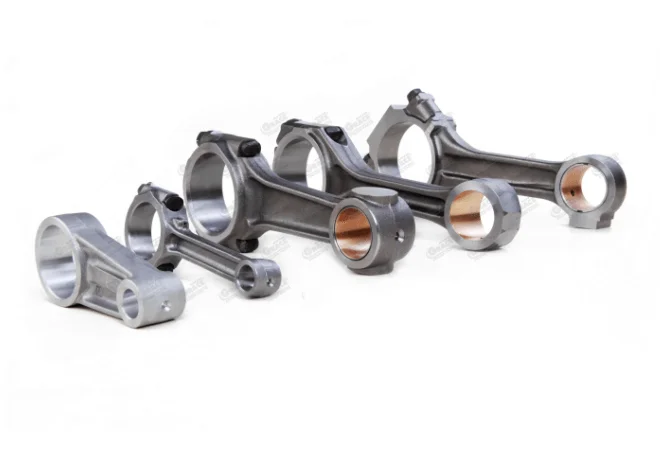
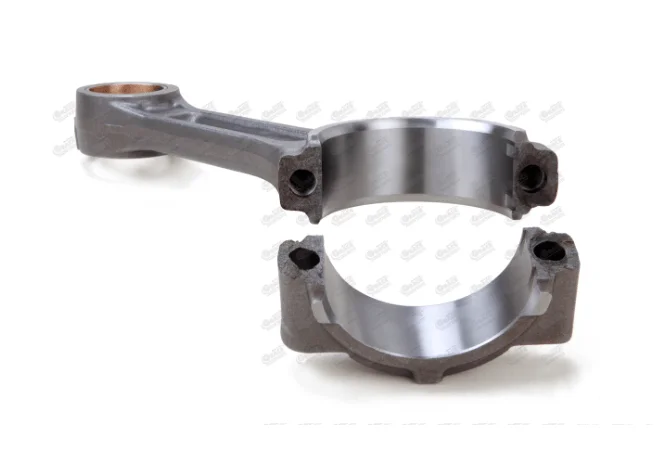
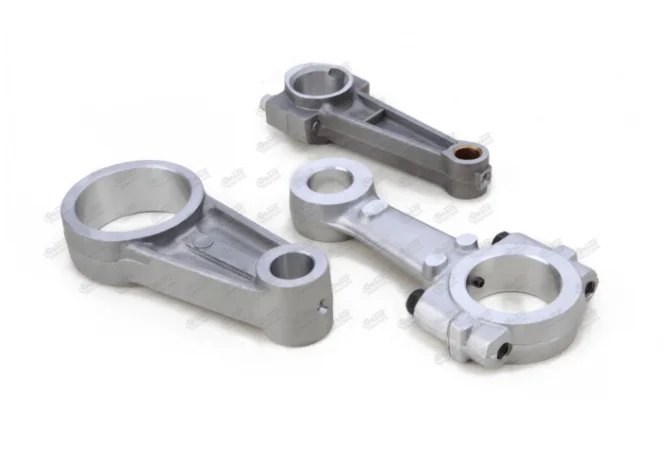
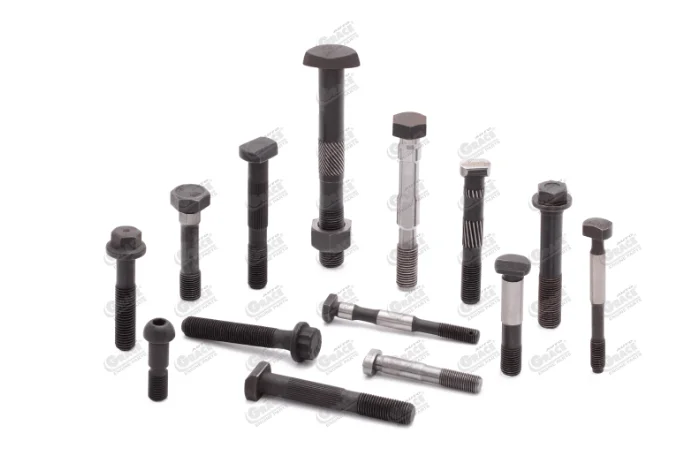
Connecting rods, or conrods, convert the reciprocating movement of the piston to the rotary movement of the crankshaft. Hence they are subject to a very complex and continuously varying loading throughout the combustion cycle. Weight of the conrod is a determining factor in the power-to-weight ratio and smooth operation of an engine. A variety of steel alloys and machining techniques are used in their production. Modern engines utilize fracture-split or cracked conrods while compact V-engines use split end conrods. Majority of conrods are manufactured by drop forging process, while casting and powdered metal / sintered conrods are also being used.
The humble circlip is an inside snap ring that fits into grooves at the outer edges of the piston pin boss holes. It keeps the piston pin from wandering laterally and hitting the cylinder liner. In cases where higher axial load is encountered, grooves are cut into the piston pin instead of the boss holes, and outside snap rings serve the purpose of the circlip. Garima Global supplies millions of circlips made from round wire or stamped spring steel.
Start the
conversation.
Every beautiful relationship starts with a simple hello. So let’s chat. It might just be the start of something memorable.